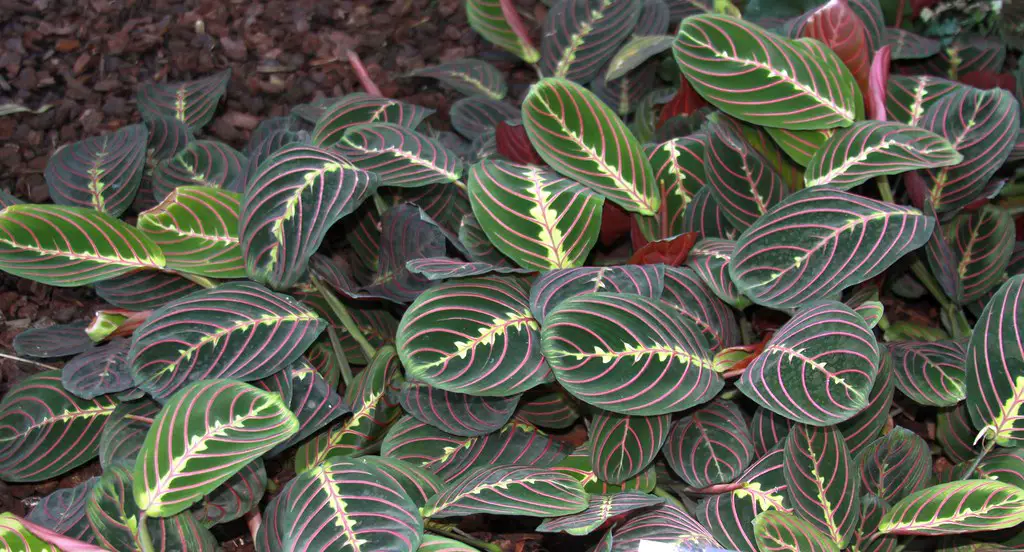Maranta, commonly known as the Prayer Plant, is a unique and captivating houseplant renowned for the striking beauty of its leaves. Its name “Prayer Plant” is derived from the nightly movement of the leaves, folding together like hands in prayer, and reopening in the morning light. This characteristic not only makes it an interesting addition to an indoor garden but a topic of conversation among plant enthusiasts.
Native to the tropical rainforests of Brazil, Maranta is part of the Marantaceae family. It flourishes under a canopy of large trees, which gives it a preference for filtered light and high humidity. With its intricate leaf patterns and colors ranging from greens to reds, it has become a favorite among interior decorators and gardeners alike.
Though beautiful, Maranta is not without its challenges. It requires specific care in terms of light, water, temperature, and humidity to mimic its natural habitat. Proper care ensures that Maranta stays healthy and continues to exhibit its unusual leaf movements.
| Attribute | Details |
|---|---|
| Common Names | Prayer Plant, Maranta |
| Botanical Name | Maranta leuconeura |
| Family | Marantaceae |
| Plant Type | Perennial |
| Mature Size | 6-12 inches tall |
| Sun Exposure | Indirect light |
| Soil Type | Well-draining, peaty soil |
| Hardiness Zones | 11-12 |
| Native Area | Brazil |
Maranta Care
The care of Maranta involves a balanced understanding of its native tropical habitat. It requires consistent moisture, proper light, and specific nutrients to flourish. Additionally, due to its humidity needs, it may require extra attention, particularly in dry indoor environments.
Maintaining proper care for Maranta also means being vigilant about potential diseases and pests. Proper grooming, feeding, and positioning can lead to a healthy and attractive plant that becomes a focal point of any room.
Light Requirement for Maranta
Maranta prefers bright, indirect sunlight. Exposure to direct sunlight can cause the leaves to lose their vibrant color and even result in sunburn. Filtered light through a curtain or placing the plant in a well-lit room without direct sunlight is usually ideal.
Soil Requirements for Maranta
A well-draining, peaty soil rich in organic matter suits Maranta best. It’s essential to avoid soil that retains too much water, as this can lead to root rot.
Water Requirements for Maranta
Maranta likes consistent moisture but not soggy soil. Overwatering can cause problems, so it’s crucial to allow the soil to slightly dry out between waterings. Using tepid, distilled, or rainwater can prevent mineral buildup.
Temperature and Humidity
Maranta thrives in temperatures between 65°F and 80°F. It also enjoys high humidity, so regular misting or placing the plant on a humidity tray might be needed, especially during dry seasons.
Fertilizer
Feeding Maranta with a balanced, water-soluble fertilizer every month during the growing season supports its growth. Avoiding over-fertilization prevents potential problems with the foliage.
Pruning Maranta
Pruning helps in shaping the plant and removing dead or yellowing leaves. Regular pruning can also promote bushier growth and keep the plant looking tidy.
Propagating Maranta
Maranta can be propagated through division. This is best done during repotting by carefully separating the plant into two or more sections and replanting them.
How To Grow Maranta From Seed
Growing Maranta from seed is uncommon and can be quite challenging. If attempting this, the seeds must be fresh and planted in a well-draining soil mix, followed by careful attention to light and moisture.
Common Pests & Plant Diseases
Spider Mites
Regular inspection and washing with soapy water can control this pest.
Root Rot
Ensuring proper watering and well-draining soil helps prevent this disease.
Common Problems With Maranta
Leaf Curling
Often due to low humidity or underwatering.
Leaf Discoloration
Can be caused by exposure to direct sunlight or over-fertilization.
Pro Tips
- Keep Maranta away from drafts and sudden temperature changes.
- Use distilled or rainwater to avoid mineral spots on leaves.
- Place the plant in a bright room but away from direct sunlight.
- Regularly inspect for pests and diseases.
- Consider a humidity tray or room humidifier to maintain moisture.




